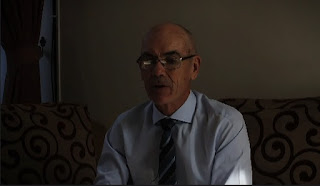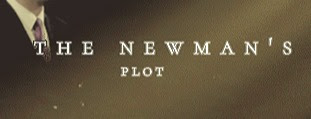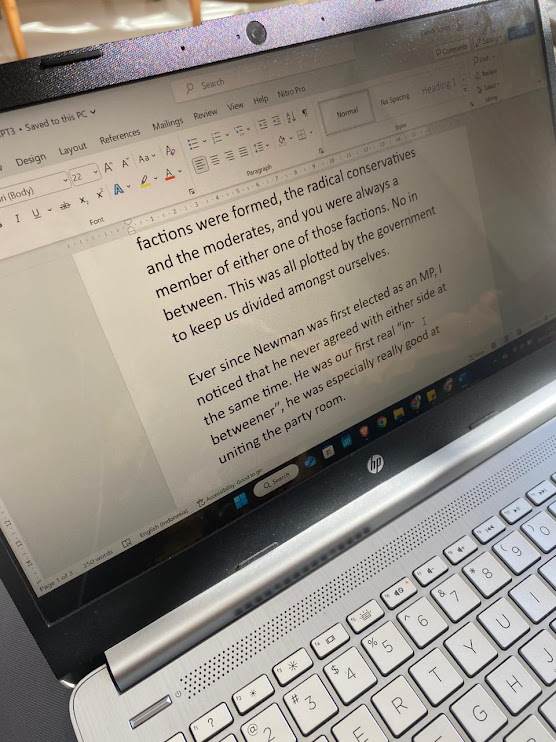Wednesday, September 11, 2024
Final Documentary + Thumbnail
Critical Self-Reflection
How do your products represent social groups or issues?
The social groups that were included in our documentary... were politicians, and political goers, and obviously there is a larger focus on them specifically because it’s a POLITICAL crime Documentary. We produced & worked on the documentary through the preferred reading that public, high-profile politicians/political figures are often victims, and are very vulnerable to those who may not be very rational (aka assassins), which is often the result of politics’ generally sensitive and contreversial nature. The issues that we directly addressed in the crime documentary was clearly the assassination attempt of a political party leader, but also the thoughts of the associated ones regarding the situation, like backers or even oppositioners. For the political party leader, they used medium shots of him speaking confidently in a suit, whilst playing triumphant music, to portray his greatness, using or highlighting specific parts of his speech that show his great ambition and ideals for what he will bring as a government. For the ATTEMPT-suspect however, he was portrayed by having more tense music, which is matched with an edited low-cut build up using the existing shots of the political party leader AND the interviewer getting visibly darker. Our documentary did use stereotypes, such as politicians being serious and controversial, while assassins are cold and often deserved targets. The film in general is trying to represent and make the audience realize the gravity that political violence can have, especially or even at the level of assassination attempt in a literal Public political Rally. When representing this event, we wanted to show not only were public political figures such as Newman affected, but also the lives of ordinary citizens, as they can, unfortunately, get caught in the crossfire as well. Stuart Hall’s reception theory was something we considered, to give the audience a meaning that they can decode and deconstruct by themselves, the consequences of the event and how big it is. The preferred reading of our crime documentary is that political violence creates a ripple, where not only are the main victims affected, but so does the rest of the community.
How do the elements of your production work together to create a sense of ‘branding’?
Branding is important as it helps give the final product a unique identity of its own, to make itself stand out for people to remember. We were heavily influenced by Altman’s genre theory, especially with how we tried to be consistent with the crime documentary Conventions. The darker tones with high contrast were something we made consistent not just within our documentary, but also across our social media platforms, teasers, and promotional content. This gave a style that was consistent and carried the seriousness of the topic throughout. Both the documentary and other materials involved our main victim character (the nearly-assassinated politician) and something involving a sand-colored statue/pose in a desert/temple background. The theme was supposed to have a ‘detached’ effect, stripping down the reality of the situation to its very core, referring to the fact that despite a politician's optimistic promises, not everyone agrees, and some take it way too far. The documentary intro sets the tone and hooks the audience, giving a general idea of the plot and what’s to come. The purpose of the thumbnail is to display key visuals, like the central figure of the crime scene, alongside a big text overlay, such as a title or short, catchy phrase, to attract ATTENTION. The audience could decode the message through the clever stark contrast between the optimistic first half and the darker, yet somewhat relieving second HALF. The message to decode is that politics is controversial, and public figures are often at risk due to its sensitive Nature.
How do your products engage with the audience?
Our target audience was people interested in politics, perhaps politicians themselves, and members of the media. The age target is 30-55, as most politicians are in that age range, and the gender target is neutral. The audience would most likely, probably be graduates with occupations such as public servants, security, politicians, political analysts, and media employees. The main ethnic appeal is to Australians, since the location of the hypothetical event is Australia. The video appeals to the demographic through its main cast, featuring older males in political professions and having a heavy on political drama and controversy. The focus on specific opinions from politicians and interviewers also appeals to those deep into politics. It features mainly Australian actors, appealing to the Australian audience in that way. The thumbnail appeals by showing a politician mixed with the background of a guilty statue, playing and capitalizing on the audience’s desire for mystery. Our product meets the uses and gratification criteria: for Surveillance, it informs and allows people to learn about a public crime; for Social Relationships, it starts conversations about the event, being a tool used to build relationships; and for Diversion, it serves as a form of scapism after a long day of school or college. The hermeneutic code of the statue in the thumbnail, which looks guilty, invites the audience to explore why the attack happened and encourage to follow their curiosity.
How did your research inform your products and the way they use or challenge conventions?
Typical crime documentary conventions include medium and close-up shots for interviews, wide shots for context and situations, and tracking shots to follow key figures or EVENTS. We used random handheld movements on phones and devices to add a sense of realism and urgency during the reenactment of the CRIME. For mise-en-scene, crime documentaries often use police stations, interview rooms, or crime scenes, while lighting can range from dramatic to neutral depending on the tension of the moment. Key props like police outfits and physical evidence help the audience piece together the MYSTERY. Sound in crime documentaries typically includes a non-diegetic narrator who guides the story in a neutral tone, and background music that creates SUSPENSE. Editing techniques like cutting between interviews and real footage, along with flashbacks and archival footage, are used to create connections and enhance realism. Our research was informed by Altman’s genre theory, showing how sticking to core conventions like interviews and reenactments helps meet audience expectations. We subverted expectations by focusing on a small-town political figure instead of a well-known politician, showing that controversial events can happen anywhere. We used sound design to build tension, such as heartbeats and rising music during a near-assassination scene, which helped engage the audience. My job was to capture behind-the-scenes content, and in the future, I plan on focusing more on organizing research into elements like camera angles, mise-en-scene, sound, and editing to better understand genre conventions as a whole, in a holistic way.
Self-Reflection: This was very tedious work to do, but I'm glad I had it done. It was quite interesting to reflect back on how I understood the Conventions of a crime documentary, but never am I going to do late-night, dinner less work before the due date again. Depending on my score/feedback, I might also have to learn to cut down the size of the texts I make.
Tuesday, September 10, 2024
Thumbnail Research + Development
Monday, September 9, 2024
Editing
MAJOR EDITING CHOICES AND METHODS
Thursday, September 5, 2024
Behind the Scenes
Final Promotional Video
This is the blog that includes the final video, the digipak album's cover, back cover, and insides, and the social media page (there wi...

-
This is the blog that includes the final video, the digipak album's cover, back cover, and insides, and the social media page (there wi...
-
Here is what I learnt during class and was assigned to complete this classwork - Completed by Kaka & Jaden Names: Jaden, Kaka Celebrity:...
-
Here is the research and development of our social media page - completed by Giorgio, Carrick, and Kaka Research Bruno Mars - Instagram ht...
.jpg)







.jpg)































.jpeg)




.jpeg)

